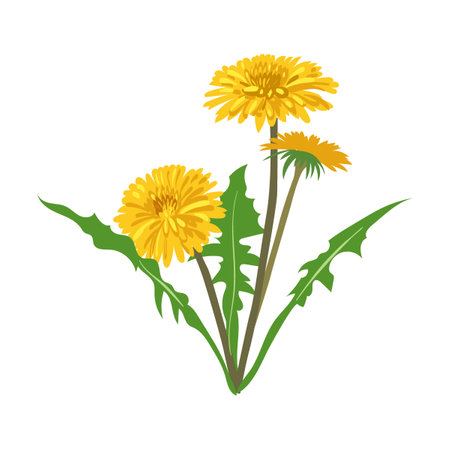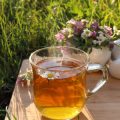Introduction to Chamomile Tea in Britain
Chamomile tea has long held a cherished place within British culture, both as a comforting beverage and as a gentle herbal remedy. While the British are renowned for their love of black tea, chamomile occupies a distinct niche, often associated with calm, well-being, and traditional wisdom passed down through generations. Its reputation for soothing nerves and aiding sleep is woven into the fabric of daily life, from the quiet corners of family kitchens to the bustling shelves of high street shops. In Britain, chamomile tea is more than just a drink; it is an emblem of natural self-care and an enduring symbol of the nation’s appreciation for herbal medicine. This overview sets the stage for exploring chamomile’s role not only as a staple in British herbal remedies but also as a familiar presence in everyday routines, underscoring its significance in both health and culture.
2. Historical Roots and Traditional Herbal Uses
Chamomile has deep roots in British herbal medicine, tracing back to the earliest records of folk remedies and apothecary traditions. Revered for its calming properties and gentle effectiveness, chamomile has featured prominently in British households and herbalist practices for centuries. In the medieval period, local healers and wise women would often recommend chamomile infusions for a variety of ailments, from digestive discomfort to restlessness. The plant’s delicate daisy-like flowers became a staple in both rural cottage gardens and monastic herbariums, symbolising comfort and natural healing.
Folklore further enriched chamomile’s reputation. According to traditional beliefs, chamomile was thought to attract good fortune and promote peace when planted near the home or used in household rituals. Its soothing scent and mild flavour made it a popular choice not only as a medicinal remedy but also as an everyday beverage, particularly during times of stress or illness. Chamomile’s role extended beyond physical health; it was believed to foster emotional well-being and harmony within families.
Common Historical Uses of Chamomile in Britain
| Application | Purpose | Context |
|---|---|---|
| Infusions (Tea) | Calming nerves, aiding sleep | Night-time ritual, convalescence |
| Compresses & Poultices | Soothing skin irritations | Treatment for wounds & rashes |
| Aromatic Sachets | Promoting relaxation & freshening rooms | Placed under pillows or in drawers |
| Bath Additive | Easing muscle aches & tension | Herbal bath preparations |
| Garden Companion Planting | Symbolising protection & luck | Planted near homes and other herbs |
This long-standing heritage highlights how chamomile became an enduring symbol of gentle care within British culture, seamlessly blending practical herbal applications with cherished traditions and folklore.

3. Chamomile in Contemporary British Herbal Practice
In modern Britain, chamomile continues to be a cornerstone of herbal medicine, valued by both professional herbalists and individuals seeking natural remedies. British herbal practitioners often recommend chamomile, particularly German chamomile (Matricaria recutita), for its gentle yet effective properties. It is commonly used to address digestive complaints such as bloating, mild indigestion, and irritable bowel syndrome (IBS). Its well-documented anti-inflammatory and antispasmodic effects make it a go-to option for soothing the gut and calming discomfort.
Within the context of complementary therapies, chamomile tea remains immensely popular not only for its medicinal qualities but also as a symbol of comfort in British households. Many people turn to a warm cup of chamomile tea to alleviate stress and promote restful sleep—a practice deeply ingrained in daily routines across the UK. Contemporary herbalists may also prescribe chamomile in tincture or capsule form, especially when higher concentrations are needed or when blending with other herbs for tailored remedies.
Furthermore, British herbal clinics often integrate chamomile into holistic treatment plans that consider both physical and emotional wellbeing. For example, it is sometimes recommended alongside mindfulness practices or aromatherapy sessions to enhance relaxation and improve mood. The widespread availability of chamomile-based products in health shops and supermarkets attests to its enduring relevance in everyday life, bridging traditional uses with modern wellness trends.
4. Everyday Enjoyment: Chamomile Tea at Home
Chamomile tea holds a distinctive place in British daily life, not just as a herbal remedy but as a comforting beverage woven into the fabric of home rituals and customs. Its reputation for promoting relaxation and wellbeing has made it a staple in many British households, particularly during the evening wind-down. Unlike the more caffeinated black teas associated with afternoon tea or breakfast, chamomile is often reserved for quieter moments, signalling a shift from activity to rest.
Rituals and Customs Surrounding Chamomile Tea
In British homes, the act of brewing chamomile tea can be both practical and ceremonial. Many people associate its delicate floral aroma with bedtime routines or moments of self-care. For some families, offering a cup of chamomile is an unspoken gesture of care when someone feels anxious or unwell. The simplicity of preparation—just hot water and dried flowers—adds to its accessibility and charm.
Typical Times and Occasions for Chamomile Tea
| Occasion | Description |
|---|---|
| Bedtime Routine | Commonly enjoyed before sleep for its calming effects and association with good rest. |
| Stressful Days | Brewed during periods of stress or after emotional conversations as a soothing gesture. |
| Family Gatherings | Sometimes offered after dinner instead of coffee or stronger teas to promote relaxation. |
| Personal Reflection | Sipped alone during reading or journaling, supporting mindfulness practices at home. |
The Wellbeing Perspective
The modern British approach to wellbeing has seen chamomile tea become part of broader trends in self-care and holistic health. Its non-caffeinated nature appeals to those seeking balance amidst busy schedules. Whether chosen for its gentle taste, digestive support, or soothing properties, chamomile tea remains a quiet but significant contributor to everyday comfort and connection within British homes.
5. Perceived Health Benefits and Scientific Perspectives
Chamomile tea has long held a cherished place in British herbal medicine, not just for its comforting flavour but also for its perceived therapeutic properties. Traditionally, chamomile was recommended by herbalists across the UK as a gentle remedy for sleep disturbances, digestive discomfort, and mild anxiety. Folk wisdom often regarded a cup of chamomile as a nightly ritual to soothe nerves and promote restful sleep, and this reputation persists in many British households today.
From a scientific standpoint, modern research has begun to explore these traditional claims with more rigour. Recent studies suggest that chamomile contains bioactive compounds such as apigenin, which may interact with receptors in the brain to reduce anxiety and support sleep. There is also some evidence indicating its mild anti-inflammatory and antispasmodic effects, potentially validating its historic use for gastrointestinal complaints.
Despite promising findings, it’s important to note that the clinical evidence remains mixed and often limited by small sample sizes or methodological differences. The NHS generally acknowledges chamomile tea as safe for most people when consumed in moderation, but stops short of endorsing it as a substitute for medical treatment. Many British practitioners of complementary medicine advocate a balanced approach—embracing both traditional uses and cautious optimism about emerging scientific data.
In everyday life, the British appreciation for chamomile tea goes beyond health claims; it represents a gentle act of self-care woven into daily routines. Whether sipped before bed or offered as comfort during stressful times, chamomile continues to bridge the gap between age-old remedies and contemporary wellness trends.
6. Sourcing and Preparing Chamomile Tea in the UK
For those interested in experiencing chamomile tea as it is enjoyed across Britain, sourcing quality ingredients and preparing the infusion thoughtfully can make all the difference. In the UK, chamomile tea is readily available from a wide range of outlets—from supermarket shelves and health food shops to traditional apothecaries and farmers markets. English-grown chamomile (Matricaria chamomilla or Chamaemelum nobile) is often preferred for its distinctive floral character, though blends may vary depending on region and supplier.
Choosing Your Chamomile: Dried Flowers vs. Tea Bags
While many Britons reach for convenient tea bags, herbalists and enthusiasts often advocate for loose dried chamomile flowers to ensure purity and depth of flavour. When buying loose chamomile, look for whole, golden-yellow flower heads, which indicate freshness. Organic options are widely available and popular among those seeking a more natural cup.
Local Touches and Blending Traditions
Across the UK, regional variations exist in how chamomile tea is enjoyed. In some areas, it’s common to blend chamomile with other native herbs such as mint, lemon balm, or elderflower—reflecting centuries-old British herbal traditions. Some families pass down their own blending recipes, adding a layer of personal heritage to each cup.
How to Prepare a Proper British Chamomile Tea
To brew a classic British-style chamomile tea: Use 1–2 teaspoons of dried flowers per cup or one commercial tea bag. Pour freshly boiled (but not boiling) water over the chamomile, cover, and steep for 5–10 minutes according to taste preference. Locals often sweeten their brew with a drizzle of honey or enjoy it plain to savour its subtle apple-like notes. Serving in a favourite mug or teapot adds to the comfort factor—a small but important part of British daily rituals.
Sourcing locally grown chamomile supports British agriculture and ensures a fresher product. Foraging is also possible in rural areas during late spring and summer, but always follow responsible wildcrafting guidelines to protect plant populations.
Whether you are seeking the gentle calm of an evening cup or exploring Britain’s rich herbal heritage, sourcing and preparing chamomile tea offers both practicality and pleasure—rooted firmly in local custom and contemporary life.


